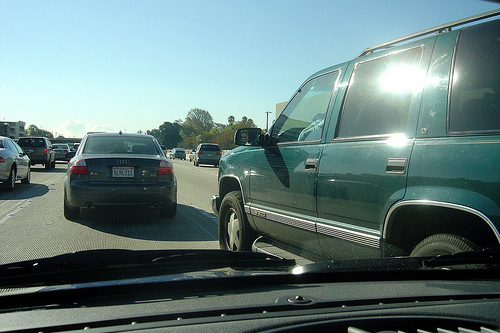We’ve heard the plans to make self-driving cars commercially viable by 2017. We’ve seen flying cars in some futuristic movies. But now, it’s good to point out that technology is also hoping to help blind people drive themselves.
In 2011, Mark Riccobono, an executive at the National Federation of the Blind in US, test drove a Ford Escape at 25 mph on the track at the Datona International Speedway. Mark was blind while driving that car and he had complete control of its movement. Neither was it a self-driving car.
This was part of the Blind Driver Challenge, a partnership between the National Federation of the Blind and engineers at the Robotics and Mechanisms Laboratory of Virginia Tech. Mark speaking to Wired.com said, “This is awesome because it means we built real technology that put real responsibility in the hands of blind people, and with that responsibility comes opportunity.”
For Mark’s test drive, and for him to be able to understand his immediate environment while driving, the car engineers replicated the parts of the human body and brain responsible for driving, in the car. These parts were built as sensors, hardware and software parts of the car. So even though he could not see, the car could, and it could feel.
The car used laser sensors and cameras for virtual vision of the road. An Inertial Measurement Unit served as the ‘inner ear’. All these would send a signal to Mark, vibrating his seat, helping him know whether to speed up or slow down. Also, he wore gloves that have tiny vibrating motors. These gloves let him know which way to swerve per time. The test drive was done with a truck dropping obstacles in front of the car at intervals. The exercise was successful as Mark successfully drove past all the obstacles without hitting them.
This technology is still being worked on and it’s a long way from becoming commercially viable. What we do know, however, is that there are endless possibilities for it. It won’t only be great for blind people, it will also work for people with limited sight, and will help enhance people’s sensory capabilities and their ability to drive in the dark and poor weather.
Photo Credit: Malingering via Compfight cc











